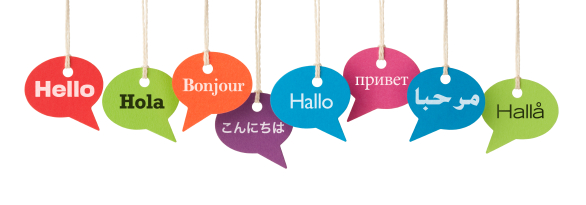Best Practices to Follow For Multilingual Website Development
Your website is your prime means of communication with your audience and the ability to communicate with them depends on having an effective web presence, whether it is through a website or through a social media platform like Facebook or Twitter. Global marketers often go to great lengths to create high quality and user friendly websites and creating an exceptional user experience helps them to convert their prospects into customers and generate more profitability and sales. Translating your website into multiple languages is a big job, but to strive in the competitive market and to make the process smooth, there needs a lot of preparation for creating a multilingual website. It should be well planned and executed, so that the results are well worth the cost and effort.
Here, we have discussed some of the best practices for developing a multilingual website so that you are more likely to get your expected results.
Start with some research:
Once you have planned to build a multilingual website, it is very important to do some research work to determine the languages that offer the best business growth opportunities. Though there are best outsourcing companies in India to help you to evaluate the competition and analyze where your services or products are likely to be most in demand. If you have an ecommerce website, then there are statistics that you should check before proceeding and then decide on the best language that will offer you online buying power.
Spread a global message:
While developing and managing a multilingual website, it is very important to ensure that your visitors get a message about your brand and they enjoy a smooth UX irrespective of the language of the site. Since you will always want to promote the same brand and spread the same message to your visitors, you should thoroughly plan for the best message and effectively design it for your site so that your customer has a consistent look and feel of all your global sites.

Keep design in mind to stand out
It is very important for your business to stand out of the crowd if you want to attract more and more traffic. Trying to create a design that is both effective and functional will help you to retain your visitors easily:
- Choose global templates for branding: While creating a multilingual website, you can only offer some directions to your visitors, but you can’t control which sites they should access. To attract your visitors, it is important to maintain a consistent global brand image and choosing a global template is the best option before you. Most website development companies employ global layout templates and designs that are optimized for the desktops and mobile devices. This enhances the efficiency of the site and helps to manage text expansion and even allow the local teams to control the presentation. A flexible template will allow accommodating all the languages and simplifying multisite management, while reducing the designing and development expenses.
- Use icons and colors appropriately: Your website design should be stylish and attractive, but not offensive to other cultures. Avoid using any specific images, religious symbols or animals that may have a shade of bias. The symbolism of colors also varies widely and according to experts, the color blue is most globally accepted. So it is suggested to choose the colors and use them functionally on your site and make sure that it does not represent any cultural implications.
Keep global internet speed in mind:
Before a visitor takes a look at your site, it is important for the site to load properly. If you keep them waiting while the heavy page loads, they will probably move to some other sites. Your multilingual website development company should check how much internet speed variance exists and they should design the site accordingly. Remove, modify or optimize the graphics or large files that can probably slow down your website for the international users.
Plan for international SEO:
Once you have your site developed in any foreign language, make sure that prospective customers find it on local search engines. You should pay attention to multilingual SEO and for this specify your targets and choose the same URL structure for all your sites to make it easier for the search engines to relate to them. Choose the best keywords that the users in each language may use and select on relevance and search volumes. Also make sure that everything is translated so that search engines scan and use the content of your site that include meta page titles, descriptive tag attributes, descriptions and keywords. Backlinks from other sites of the same language will also help to drive initial traffic.
Developing multilingual sites aren’t an easy task, and doing them wrong can be a great waste of money and time. So, prepare a thorough plan for your site and follow the above points for best possible international success.
